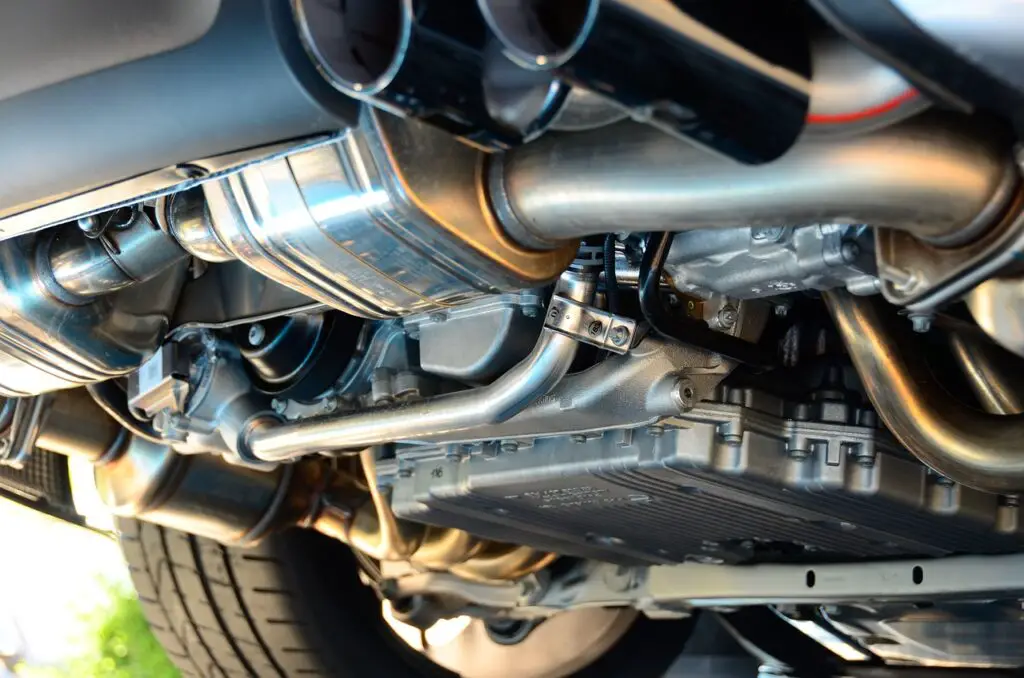If you’ve ever wondered what keeps your car’s emissions from polluting the air we breathe, look no further than the catalytic converter. Nestled within your car’s exhaust system, this unassuming component plays a critical role in reducing harmful pollutants, keeping your car compliant with environmental regulations, and maintaining cleaner air for everyone. But how does it work, and why is it so essential? Let’s dive into the details.
The Basics: What Is a Catalytic Converter?
A catalytic converter is an emissions control device that transforms harmful gases from your car’s engine into less harmful substances before they leave the tailpipe. Required in all modern vehicles, the catalytic converter is one of the most important components for meeting environmental standards.
Located between the engine and the muffler, it’s a metal casing filled with a honeycomb structure coated in precious metals like platinum, palladium, and rhodium. These metals act as catalysts, which means they speed up chemical reactions without being consumed in the process.
How Does a Catalytic Converter Work?
The magic of the catalytic converter happens in three stages, designed to tackle different types of harmful emissions:
- Reduction Reaction
- The first stage targets nitrogen oxides (NOx), which contribute to smog and acid rain.
- Using rhodium and platinum, the converter breaks NOx into harmless nitrogen and oxygen gases.
- Oxidation Reaction
- The second stage addresses carbon monoxide (CO), a deadly gas that results from incomplete combustion.
- Palladium and platinum help convert CO into carbon dioxide (CO2), a less harmful gas.
- Hydrocarbon Oxidation
- Hydrocarbons (unburned fuel) are transformed into water (H2O) and carbon dioxide (CO2).
- This reduces the smell and harmful effects of vehicle exhaust.
These reactions occur as the exhaust gases pass through the catalytic converter’s honeycomb structure, which maximizes the surface area for these chemical changes.
Why Is the Catalytic Converter Important?
The catalytic converter isn’t just a regulatory requirement—it’s a key player in reducing your car’s environmental impact. Here’s why it matters:
- Reduces Harmful Emissions
- Without a catalytic converter, your car would release pollutants like nitrogen oxides, carbon monoxide, and hydrocarbons unchecked into the atmosphere.
- Improves Air Quality
- By converting toxic gases into less harmful substances, catalytic converters help improve air quality, particularly in urban areas.
- Ensures Regulatory Compliance
- Most countries have strict emissions standards, and a functioning catalytic converter is essential to meet them. Without one, you could fail emissions tests and face hefty fines.
- Enhances Resale Value
- A car with a functioning catalytic converter is more appealing to buyers since it ensures the vehicle meets emissions standards.

Signs of a Failing Catalytic Converter
Catalytic converters are built to last, but like any car part, they can fail. Here are some warning signs:
- Decreased Performance: If your car feels sluggish, the converter might be clogged, restricting exhaust flow.
- Check Engine Light: A failing catalytic converter can trigger a diagnostic trouble code, causing the check engine light to illuminate.
- Rotten Egg Smell: Sulfur buildup can create a foul odor, a common symptom of a failing converter.
- Poor Fuel Efficiency: A clogged converter can make your engine work harder, reducing fuel economy.
Can You Drive Without a Catalytic Converter?
Technically, yes, but it’s illegal and environmentally irresponsible. Driving without a catalytic converter increases your car’s emissions and can lead to fines or penalties. Additionally, removing the converter could damage your engine over time, as it’s designed to work with the entire exhaust system in place.
Protecting Your Catalytic Converter
Catalytic converters have become a target for theft due to the precious metals inside. Here’s how you can protect yours:
- Park Securely: Use garages or well-lit areas.
- Install Anti-Theft Devices: Shields or locks can deter thieves.
- Engrave Identification: Marking your catalytic converter can help authorities track it if stolen.
Final Thoughts
The catalytic converter is more than just a piece of metal in your car’s exhaust system—it’s a vital component for reducing pollution and protecting the environment. By understanding its function, keeping it well-maintained, and protecting it from theft, you’ll ensure your car runs cleaner and complies with emissions standards.
Have questions or tips about catalytic converters? Share your thoughts in the comments below!
Discover more from Chikwem
Subscribe to get the latest posts sent to your email.